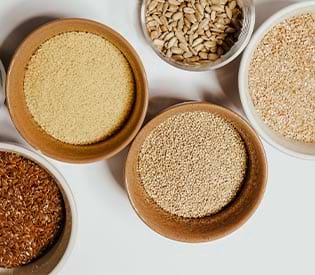White Willow Bark Powder
📦🚚 Fast & Free shipping on all orders
What is white willow bark powder?
The medium-sized deciduous tree Salix alba has grey-green bark and long, tapering green leaves. Because of its advantageous qualities, white willow bark has long been used in traditional European herbalism. Salicin, the chemical component that is the active ingredient in willow bark and the precursor of aspirin, is present in it. Powdered white willow bark may be used topically, tinctured, infused, or capsuled.
The willow is a low-growing deciduous tree that is native to parts of Africa, northern Asia, and North America. It produces catkins in the spring and long, green, tapering leaves. In the spring, young trees lose their bark. Long before Columbus or the Vikings arrived, Native American healers were using willow bark. The process of turning willow bark into aspirin started in 1828, when German scientist Felix Hoffmann identified salicin as the active component. The Bayer Corporation started producing and distributing aspirin, or acetylsalicylic acid, a modified version of the molecule found in willow bark, in 1899. Since then, this first of the contemporary wonder drugs has been a staple in the management of joint pain. The Salicaceae family includes white willow, which is also known as bai liu pi in traditional Chinese medicine.
How do I use white willow bark powder?
By infusing the powdered white willow bark in boiling water for ten minutes, one may make a tea. The recommended dose is up to three times a day; use 1-2 teaspoons of herbal powder in 1 cup of hot water. Don't take more than the recommended amount. Take 2–4 milliliters of the tincture up to four times a day.
White Willow Bark Powder benefits:
Willow bark has been used for millennia in China and Europe to cure a variety of ailments, including headaches, inflammatory diseases like bursitis and tendinitis, and pain, especially low back pain and osteoarthritis.
◉ High in antioxidants: Not all inflammation in your body is acute, such as that brought on by an illness or accident. Many individuals also have chronic inflammation, although the symptoms often don't manifest for years after the inflammatory event. Antioxidants are one of the strongest tools in the fight against chronic inflammation. These advantageous chemicals support healthy aging by shielding your body from oxidative stress, which may be a contributing factor to inflammation. Willow bark is beneficial for this kind of inflammation because, in addition to having antioxidants in it, it also seems to increase your body's levels of other antioxidants, such as glutathione.
◉ Defends Against Common Illnesses and Fevers: WWB may help cure fevers, treat colds, control flu symptoms, and expedite recovery from other diseases by boosting the immune system, supplying antioxidants, and lowering inflammation. The presence of polyphenols and flavonoids, among other components, in white willow seems to contribute to an enhanced defense against germs and viruses. It has been shown that these antioxidants have antibacterial and fever-reducing qualities. When mixed in essential oil form or tea with cooling herbs like peppermint or wintergreen, willow bark may be particularly beneficial for fevers.
◉ Combats Acne: Willow bark has several benefits in the battle against acne. First, by lowering oil production and "drying up" extra oil, it benefits those who have breakouts from overproduction of sebum and oily skin. Additionally, it aids in skin exfoliation, which is crucial for removing dead skin cells that might block pores. Moreover, salicin, which is found in willow bark, is a precursor to salicylic acid, a frequent element in acne treatments. Although salicin isn't as potent as highly concentrated salicylic acid, it still combats breakouts and is generally less drying for those with sensitive skin.
◉ Used to Help With Weight Loss: Some studies suggest that WWB may help stimulate fat reduction in people who are overweight or obese, despite the paucity of evidence on its benefits for weight loss. Although the anti-inflammatory properties of willow bark are thought to enhance metabolic health, some experts advise against taking it for this reason since there isn't enough data to determine its safety. When used with dangerous weight-loss products like Ephedra—which the US has outlawed owing to allegations of severe side effects—it also seems dangerous.
Where can I buy white willow bark powder?
Buy White Willow Bark Powder from the health food store in the USA, Alive Herbals.
White Willow Bark Powder information (at a glance):
| Product Name | White Willow Bark Powder. |
| Scientific Name | Salicis cortex, Salix alba L., Salix fragilis L., Salix purpurea L. |
| Country of Origin | It is native to Europe and some parts of Asia and Africa, and now naturalized in North America. |
| Product Style | Powder |
| Taste & Aroma | Aroma: Mild, bark-like. Taste: Bitter, bark-like. |
| Shelf Life & Storage | Shelf Life is about 06 - 12 months. Store it in an airtight container in a cool, dry place and prevent sunlight exposure. |
| Precautions | We requested you, Before consuming spices, herbs, teas or any kind of natural products you consult an expert qualified healthcare practitioner or herbalist. |
| Note | This product information has not been appraised by the Food and Drug Administration (FDA). For educational purposes only. |







